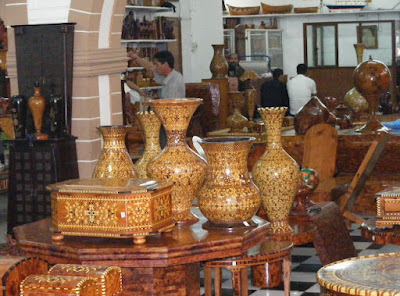 |
| Photo from movie Game of Thrones |
Where Marrakech is a uniform pink, this sun-beaten town on the Atlantic coast is blue and white. The prosperity of the place peaked in the 18th and 19th centuries, when it was the most important port on the North African coast and a conduit between Europe and the African hinterland. It faded from consciousness in the 20th century, but drew plenty of travelling hippies in the 1960s and early 1970s. Its agreeably languid air stirs only by late afternoon when the fishing fleet returns to disgorge the day’s catch.
1. Ramparts
Essaouira‘s current layout can be traced back to 1765. That year, the town’s local ruler captured a French ship and hired one of its passengers, an architect, to rebuild his port. He had the city surrounded with a heavy defensive wall, much of which still stands. The most impressive stretch is the Skala de la Ville, where you can walk along the top of the ramparts and examine several ancient cannons.
2. Place Moulay Hassan
Place Moulay Hassan is the focal point of Essaouira. A square in two parts, narrow and elongated to the north and opening out at the southern end, it lies between the medina proper and the port, and everybody passes through it at some point. It’s lined by small cafés, where half the town seems to pass half of its time.
3. The port
Guarded by a toy-like, square fortress, Essaouira’s port, the Skala du Porte, is still a working concern complete with a boat yard, where vessels are still constructed out of wood. A daily market kicks into life between 3pm and 5pm with the arrival of the day’s catch. Visitors can watch as the fish are auctioned off and follow that up by feasting on fresh sardines, grilled to order at the port end of Place Moulay Hassan.
As in Marrakech, Essaouira’s medina is a labyrinth of narrow streets. It is, however, not as hard to navigate, bisected as it is by one long, straight street. This street begins at the port and runs all the way up to the north gate, the Bab Doukkala, undergoing two name changes along the way.
5. The mellah
During the 18th and 19th centuries, a Jewish community gained prominence in Essaouira, becoming the most important economic group. They have all long since left and the town’s Jewish quarter is in a dilapidated state. You can reach the mellah by following the alleys just inside the ramparts beyond Skala de la Ville. You can still identify the former Jewish residences, fronted as they are by balconies. In some cases, the Hebrew inscriptions on their lintels are also visible.
6. The souks
At the heart of the medina is a lively market, the Souk Jdid, divided into four quarters by the intersection of two main thoroughfares.
There is a daily souk for fish, spice and grains and a cloistered square, known as the Joutia, where secondhand items are auctioned.
7. Place Orson Welles
Between the medina walls and the beach, a small park-like square goes by the name of Place Orson Welles, in honour of the great filmmaker who came to Essaouira in 1949 to shoot his version of Othello. Since then, Essaouira and the surrounding area have been used as movie locations in many international film projects, the most recent ones being Oliver Stone’s epic Alexander the Great and Ridley Scott’s Kingdom of Heaven.
Essaouira’s beach, to the south of the medina, is one of the finest in Morocco. However, the strong winds that batter this part of the Atlantic coast frequently make it a little too cold for comfort – not that this bothers the boys who gather here year round to use the compact sand of the beach as a football pitch.
9. Galerie Damgaard
For about a quarter of a century, a generation of painters and sculptors have made Essaouira an important centre of artistic activity. Many of these artists have been brought to public attention by the Dane Frederic Damgaard who, since 1988, has run this influential gallery in the medina.
10. Musée des Arts et Traditions Populaires
This small and recently refurbished ethnographic museum occupies a 19th-century house that was formerly the town hall. It contains displays of ancient crafts, weapons and jewellery. Also displayed here are instruments and accessories that were used by religious brotherhoods. You can also view some stunning examples of Berber and Jewish costumes.














